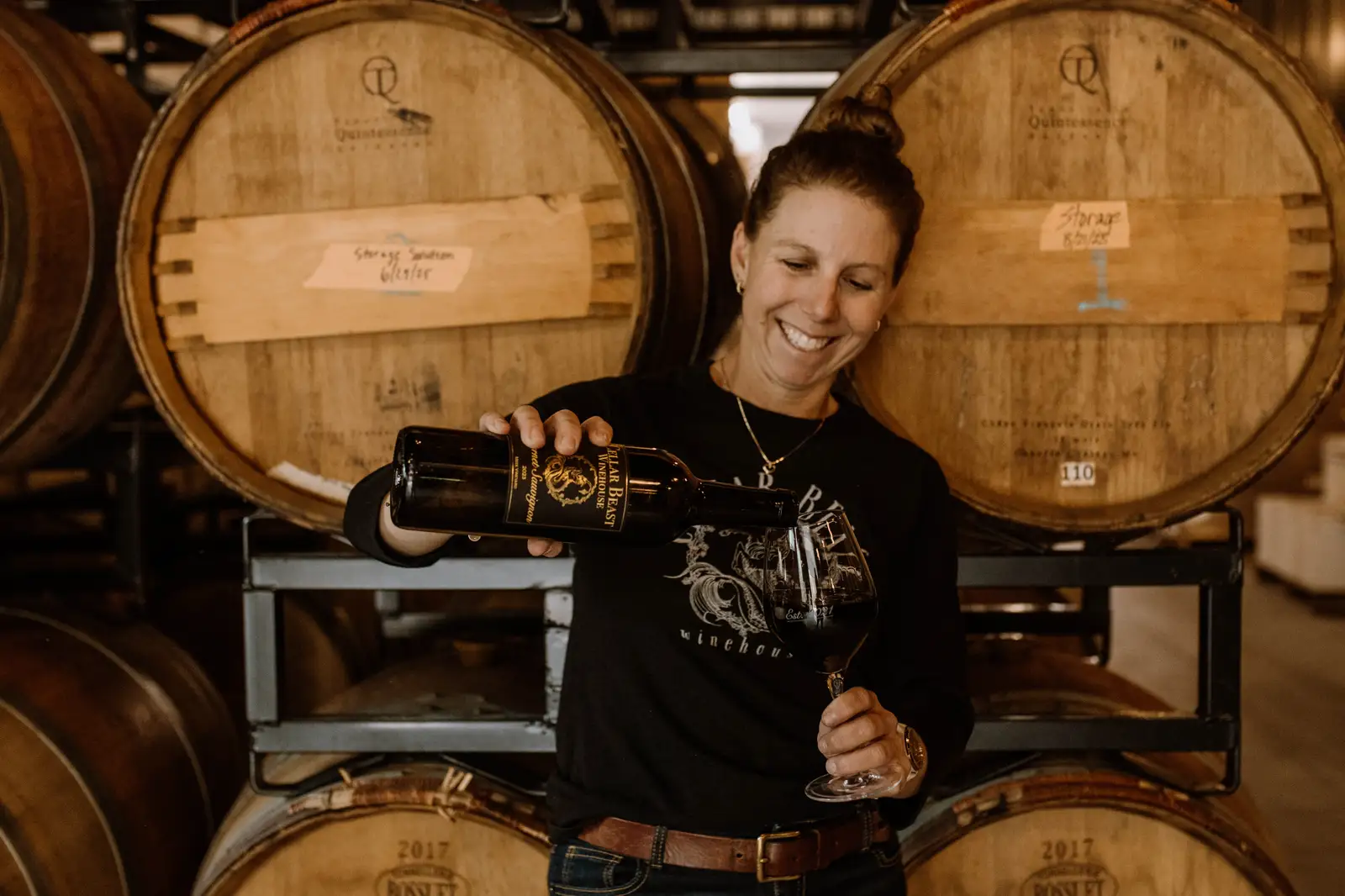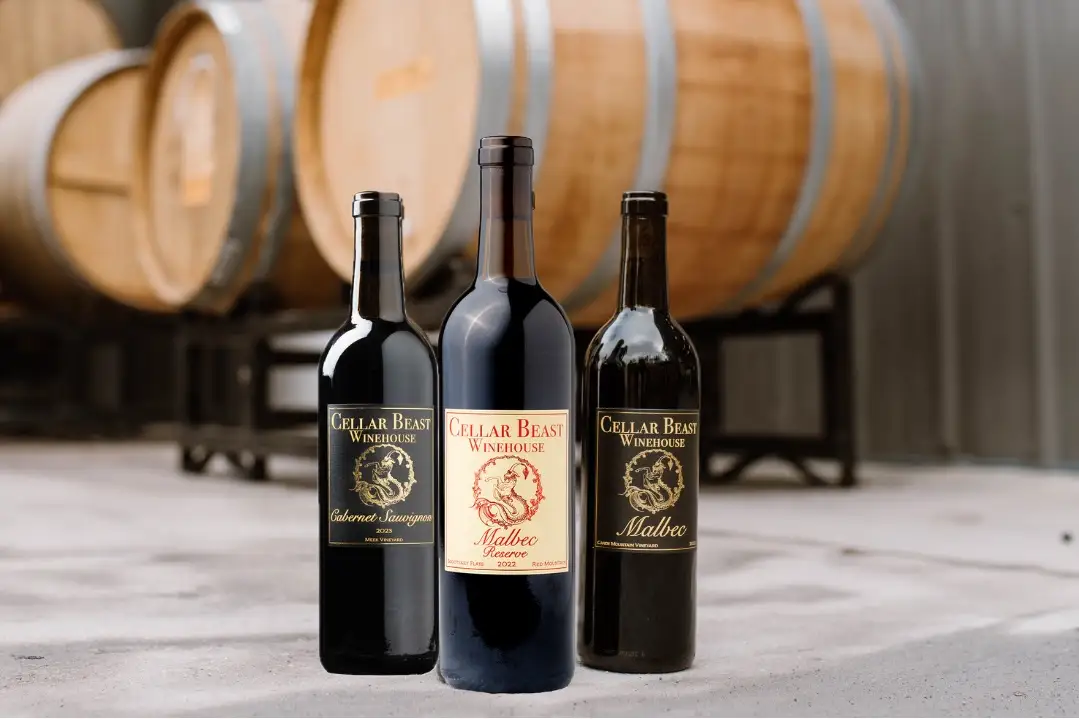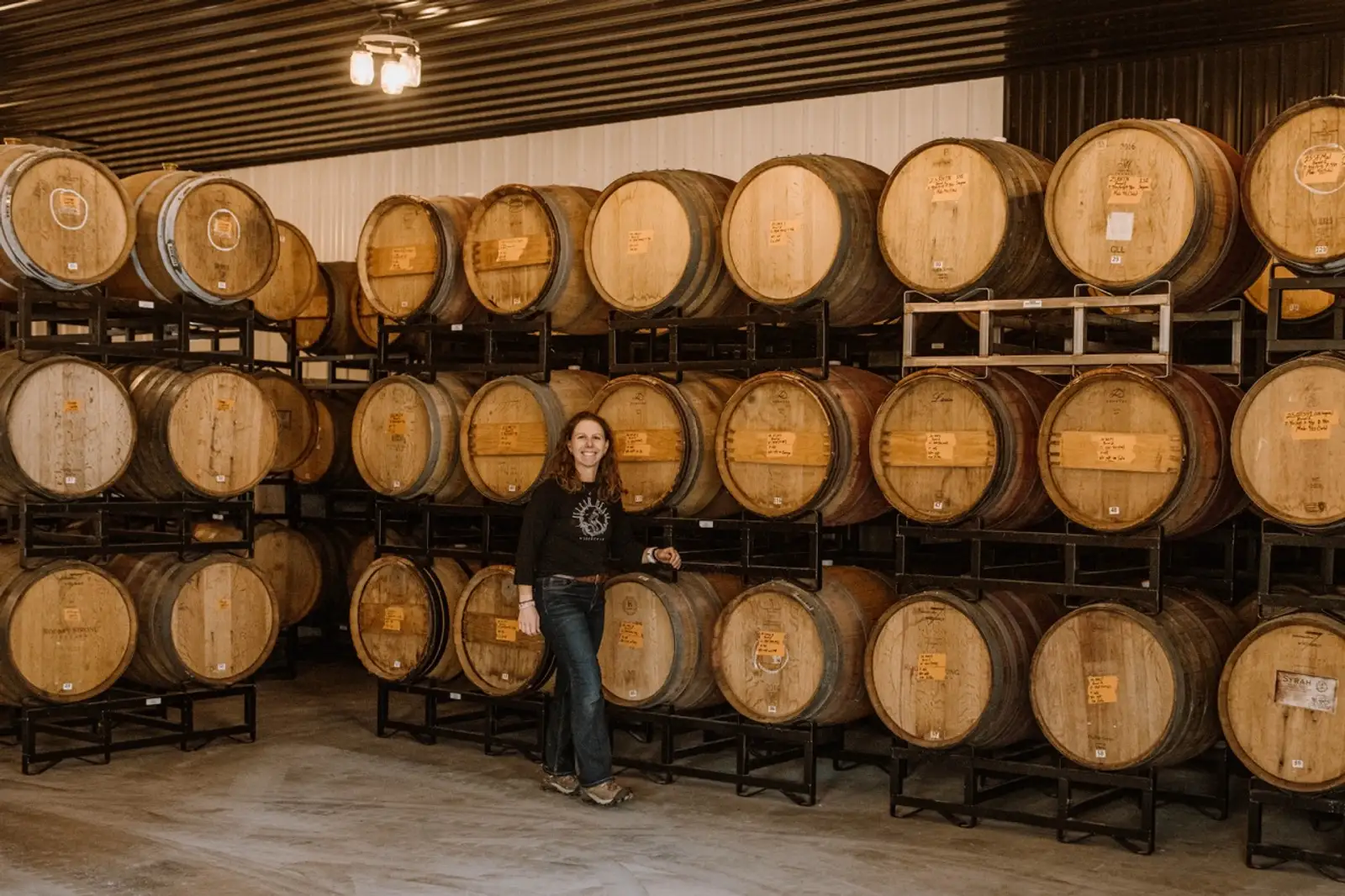By Kim McCullough, Owner & Co-Founder – Cellar Beast Winehouse
Award-winning wines crafted in Pennsylvania from premier West Coast vineyards—that’s the Cellar Beast Winehouse signature. And when it comes to full-bodied red wines, few debates captivate wine lovers more than Malbec vs. Cabernet Sauvignon. Both are icons of the wine cellar, both trace their roots to Bordeaux, and both can transform a meal of grilled red meats or lamb dishes into a gourmet experience. But their personalities are as distinct as the high-altitude vineyards of Argentina and the structured slopes of Washington State.
This is your decisive, no-nonsense guide. We’re comparing flavor, body, tannic structure, and food pairings while grounding everything in the craftsmanship behind Cellar Beast’s small-batch reds from Yakima Valley, Candy Mountain, and Red Mountain AVAs. By the end, you’ll know exactly which bold red belongs in your glass tonight. Shop Cellar Beast's entire online collection here.
Quick Answer – Malbec vs Cabernet Sauvignon in 30 Seconds (Your Cheat Sheet)
When Malbec Wins: Smoky BBQs, casual steak nights, dinner parties where spice matters.
When Cabernet Wins: Ribeye dinners, collectors’ bottles, private cellar builds.
Skip the guesswork. Join the Cellar Beast Insider List and get Malbec vs Cab picks matched to your taste.
What Really Separates Malbec from Cabernet (Beyond the Back Label)
Both Malbec and Cabernet Sauvignon belong to the Vitis vinifera species, yet their character diverges sharply in the glass. Cabernet Sauvignon—the offspring of Cabernet Franc and Sauvignon Blanc—is the undisputed king of structure. Its small, thick-skinned berries deliver high tannin, deep color, and flavors of black currant, cassis, graphite, and cedar.
Malbec, by contrast, wears its fruit on its sleeve. Originally from Cahors, France, it found new fame in Mendoza’s Uco Valley and Luján de Cuyo, where high altitudes and intense sunlight cultivate its signature blackberry, plum, and cocoa notes. It’s the grape that loves light char and spice—a perfect match for Argentine grilling culture and for Cellar Beast’s fire-kissed Yakima Valley reds.
As Head Winemaker Matt Check explains, “Cabernet Sauvignon is about architecture and precision; Malbec is about generosity and flow.”
Tannin, Acidity, and Alcohol – How They Shape the Experience
Cabernet Sauvignon’s tannins are long, structured, and built for aging. That’s why a young Cab can feel tight or bold when first poured—it needs air or time to open. Oak aging adds subtle vanilla and cedar tones, rounding out its formidable structure.
Malbec’s tannins, by contrast, are plush and velvety. Its dark fruit flavours bloom quickly, offering approachability even in youth. While its alcohol level can be high, its lower acidity keeps it smooth and generous on the palate—a reason Malbec is often favored for weeknight enjoyment or early drinking vintages.
Flavor Profiles You’ll Actually Notice in the Glass
- Malbec: Blackberry jam, plum, cocoa powder, cola spice, and mocha. Sometimes hints of violet or baking spice.
- Cabernet Sauvignon: Black cherry, cassis, graphite, cedar, dried herbs, and tobacco leaf.
In a side-by-side tasting, Cabernet often shows a more linear progression from fruit to structure, while Malbec offers a lush, seamless mid-palate. Oak aging refines both—Cabernet gaining earthy complexity, Malbec developing chocolatey warmth.
Cellar Beast Signature Insight: The Mood, Meal, Moment Rule
Mood: Casual unwind vs. celebration.
Meal: Grilled meats and spice (Malbec) vs. rich, buttery sauces (Cabernet).
Moment: Tuesday night vs. milestone dinner.
If your evening calls for conversation and comfort, reach for Malbec. When it demands gravitas—a decanter, a ribeye, and deep glasses—Cabernet is non-negotiable.
Love structured reds but hate pretension? Join the Cellar Beast Insider List and we’ll send you Malbec vs Cab picks that match your Mood, Meal, and Moment.
Washington State Twist – How Yakima, Candy Mountain & Red Mountain Change the Game
While most drinkers compare Napa Valley Cab and Mendoza Malbec, Washington State quietly crafts reds that balance intensity with restraint. The region’s diurnal temperature swings (hot days, cool nights) preserve acidity and brightness—yielding wines of depth, precision, and freshness that stand toe-to-toe with Bordeaux. Learn more about Washington's AVA in this recent post.
Yakima Valley (Meek Vineyard): Known for elegant aromatics and balance, producing Cabernets with graphite and black cherry notes, and Malbecs with lifted spice.
Candy Mountain AVA: The state’s smallest AVA, where concentration and sunlight give Malbec a dense, velvety core and plush dark fruit profile.
Red Mountain AVA: The backbone of Cellar Beast’s reserve program. Here, Cabernet Sauvignon and Malbec take on power, structure, and age-worthiness, supported by the region’s iron-rich soils and disciplined tannins.
Want first dibs on single-vineyard Washington reds? Join the Cellar Beast Insider List—these lots don’t sit around.

Taste It Side-by-Side – Cellar Beast Malbec vs Cabernet in Your Glass
The Malbec Flight
- 2022 Malbec – Meek Vineyard (Yakima Valley AVA): Aromatic lift, dark fruit, and freshness. Pairs beautifully with burgers, roasted vegetables, or grilled lamb.
- 2023 Malbec – Candy Mountain Vineyard (Candy Mountain AVA): Concentrated fruit, plush mid-palate, and decadent texture. A bottle to impress at intimate dinners.
- 2022 Malbec Reserve – Red Heaven Vineyard (Red Mountain AVA): Deeply structured with Petit Verdot’s tension and Cabernet Franc’s aromatic finesse—a cellar-worthy wine built for longevity.
The Cabernet Counterpoint
2023 Cabernet Sauvignon – Meek Vineyard (Yakima Valley AVA): Layers of black currant, dark cherry, cocoa, and cedar. Neutral French oak aging adds elegance and savory complexity. It drinks like a refined Napa-style Cab, yet delivers Washington’s hallmark freshness.
Run a Home Tasting
- Chill slightly below room temp (60–62°F).
- Pour Malbecs first, Cabernet last.
- Observe color—Malbec’s purple hue vs. Cabernet’s deep garnet.
- Note tannin feel: silk vs. grip.
- Revisit after 15 minutes—oxygen transforms both.
Set up your own Malbec vs Cab showdown. Join the Cellar Beast Insider List for tasting kits and early allocations.
Food Pairing Power Moves – When Malbec vs Cabernet Makes the Meal
Steakhouse Strategy:
- Leaner cuts (sirloin, flank) → Malbec.
- Rich, fatty cuts (ribeye, porterhouse) → Cabernet Sauvignon.
Hosting at Home:
- Malbec: BBQ ribs, roasted peppers, tacos al pastor, and mushroom dishes.
- Cabernet Sauvignon: Lamb chops, beef Wellington, and hard cheeses like aged cheddar or Manchego.
What to Pour for the Friend Who Only Drinks Cab:
Start them on Cellar Beast’s Candy Mountain Malbec. Its structure mirrors Cabernet’s but the fruit is lusher—it converts skeptics fast.
Planning a steak night or dinner party? Join the Insider List for pairing cheat sheets and first access to new Malbec and Cab releases.
Why Cellar Beast Wines Stand Out in the Malbec vs Cabernet Debate
Cellar Beast’s ethos combines Old World French technique with New World precision. Grapes are sourced from elite Washington, Oregon, and California AVAs, transported cold within days, and processed in Pennsylvania using whole-berry fermentation, extended maceration, and oak aging in neutral and new French barrels.
This attention to texture over flash yields wines with restraint, balance, and depth—the antithesis of over-oaked reds. Our Cabernet Franc, Petit Verdot, and Carménère programs further define our cellar style: dark color, purity of fruit, and seamless mouthfeel.
Sustainable Sourcing:
Each vineyard partner—from Meek and Pontin del Roza to Candy Mountain and Red Heaven—is chosen for its soil diversity and elevation. These high-altitude vineyards produce fruit with power and finesse, the hallmark of Cellar Beast’s craft.
Anti-Pretentious, Pro-Serious Wine:
At Cellar Beast Winehouse, we speak plainly and pour passionately. We believe the best wines don’t need translation—they need good company.
Taste the difference in person. Join the Insider List for invites to release events, winemaker dinners, and limited-seat tastings.
How to Decide: A No-BS Framework for Choosing Malbec vs Cabernet Tonight
Step 1 – Start with the Meal (or Lack of One)
- Spicy, grilled, or smoky? Choose Malbec.
- Butter, fat, or steakhouse opulence? Choose Cabernet Sauvignon.
Step 2 – Factor in the Crowd
Malbec wins when you’re pouring for mixed palates. Cabernet shines with wine geeks who love tannin-driven reds.
Step 3 – Budget and Cellar Plans
- For immediate enjoyment: Candy Mountain Malbec.
- For long-term aging: Red Heaven Malbec Reserve or Meek Vineyard Cabernet Sauvignon.
Step 4 – Your Personal Matrix
- If you want plush, fruit-forward, spice-friendly red: Malbec.
- If you crave structure, graphite, and depth: Cabernet Sauvignon.
Step 5 – Build Your Private Cellar
Start with one of each. Cellar Beast’s small-batch Washington reds evolve beautifully—a reflection of terroir, oak integration, and patient fermentation processes.
Lock this in: Join the Cellar Beast Insider List for curated recommendations, allocation alerts, and invite-only tastings.
About the Author
Kim McCullough is the Owner and Co-Founder of Cellar Beast Winehouse, a woman- and veteran-owned winery based in Andreas, Pennsylvania. With formal wine education and sommelier training, Kim leads Cellar Beast’s brand storytelling, hospitality programs, and wine education experiences. She has explored leading regions including Napa Valley, and plans to visit Oregon’s Willamette Valley, Bordeaux, and Mendoza, bringing that global perspective home to Washington AVA-driven wines.
Kim works closely with Head Winemaker Matt Check and the cellar team to translate complex vineyard sourcing into approachable narratives that empower collectors and casual enthusiasts alike. She hosts sommelier-led tastings, curates private cellar builds, and champions sustainable, craft winemaking practices.
Follow Kim and the Cellar Beast team on social platforms and through the Cellar Beast Insider List for exclusive insights into future vintages and events.
References
- Expert Wine Storage – Malbec vs Cabernet Sauvignon: What’s the Difference?
- Vin-Oh – Bold Reds: Key Differences Between Malbec and Cabernet Sauvignon
- Steakhouses NY – Cabernet vs. Malbec: Which Pairs Better?
- Hafner Vineyard Blog – Cabernet vs Malbec Comparative Guide
- Cellar Beast Winehouse Harvest Reports 2021–2025




